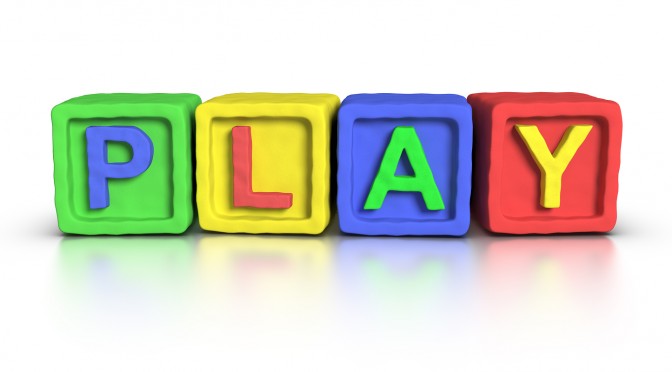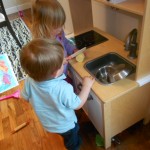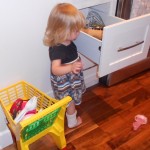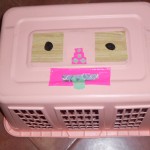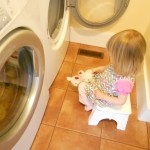How can we most help children and support early learning? Go Play!
When it comes to early learning and getting ready for life, not just for school, you want to support your child. How? Go play! Kids’ most powerful learning strategy is PLAY. Somehow, at the most critical stage for development the best way to download and connect vast amounts of information into a child’s brain is play. The only problem is…time. Parents and caregivers don’t have much time for play, or do they?
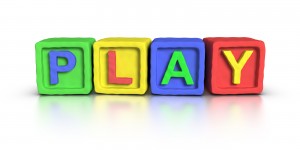 Having time for play depends on what we mean by play. Here are some points to consider:
Having time for play depends on what we mean by play. Here are some points to consider:
1. Play doesn’t only happen with toys. For example, check out the photo of the kids playing in the toy kitchen. Certainly, these kids are playing with plastic food, small tools just like real ones, and a scale version of a stove, fridge, and sink. We can easily see they are playing. But play doesn’t only happen with toys. The kids in the next photos are also playing but this time in real kitchens. In a low drawer, the younger toddler is busy taking out all the plastic containers and lids and then putting them back in. The older one is loading a toy shopping cart with plastic kitchen tools. All these kids are playing.
Kids can get very creative at using real items as toys. This can cause parents and caregivers great problems such as hunting for keys that kids were using to play with. Or discovering the gas tank on the car is full because the kids used the water hose as they played in the yard when a parent was gardening. Sometimes, the problems can be very scary because kids really will play with anything. But most of the time, we can use things we have at home to extend time to play.
2. To a child, work can be play. Laundry seems to grow like weeds and small piles can soon become mountains. Kids like to ‘help’ and be part of the action. Give the laundry hamper a monster face and kids can go around the house and gather the dirty clothes to feed the monster. Just watching the washing machine can be fun. Sock robots can sort out all the socks. When doing the laundry with kids, play some silly games and tell stories.
That’s just the laundry. Doing dishes can be play, and so can making meals and tidying up the yard. Adults need to be inspired by kids to make their work more playful.
3. Play can be counted in minutes. The hours in a day are already full but play fits into minutes. Shopping at the grocery store? Play “I Spy” with your child. This game can be adapted for kids of different ages. For young ones, maybe look for items that are bright and obvious. At Halloween, it should be easy for kids to guess pumpkin when you say “I see something orange.” Clues for older kids might be shapes or letters instead of colors. Kids also like to be able to give the clues for us to guess. On a bus tell stories. In the car, play word games like “What rhymes with car?” Alert: When playing a rhyme word game and there is another adult present, do not use the word truck. Singing might be a better option.
Taking advantage of minutes to add an element of play doesn’t need to tax your brain. Kids will find ways to play on their own. We can watch and listen to them as they play.
Play is so critical, it is enshrined as one of the rights of children by the United Nations High Commission. Kids learn basic life skills as they play. Play can happen anywhere, at any time, with anything, all alone or with others. It doesn’t require expensive toys or special programs because kids will play with sticks and boxes–and things that give our hearts a leap.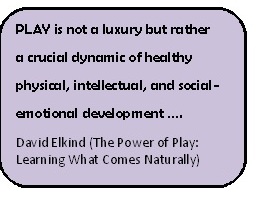
Because the early years are the most sensitive time for development, one of our responsibilities as parents and caregivers is to ensure kids have time and space to play. Isn’t it amazing that at one of the busiest times in our lives we can provide for children’s most critical needs thru play? 1 2 3 Go PLAY!
